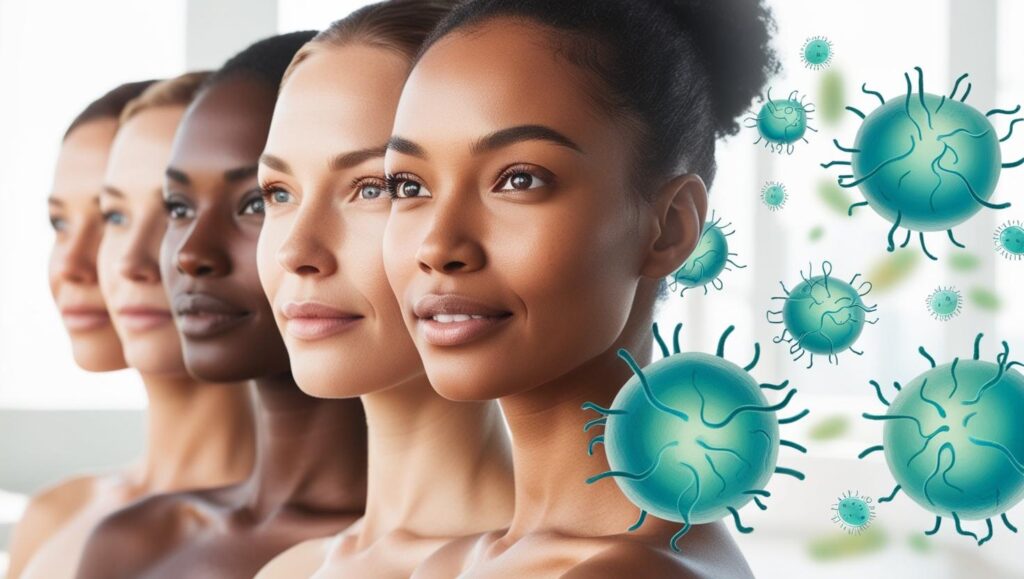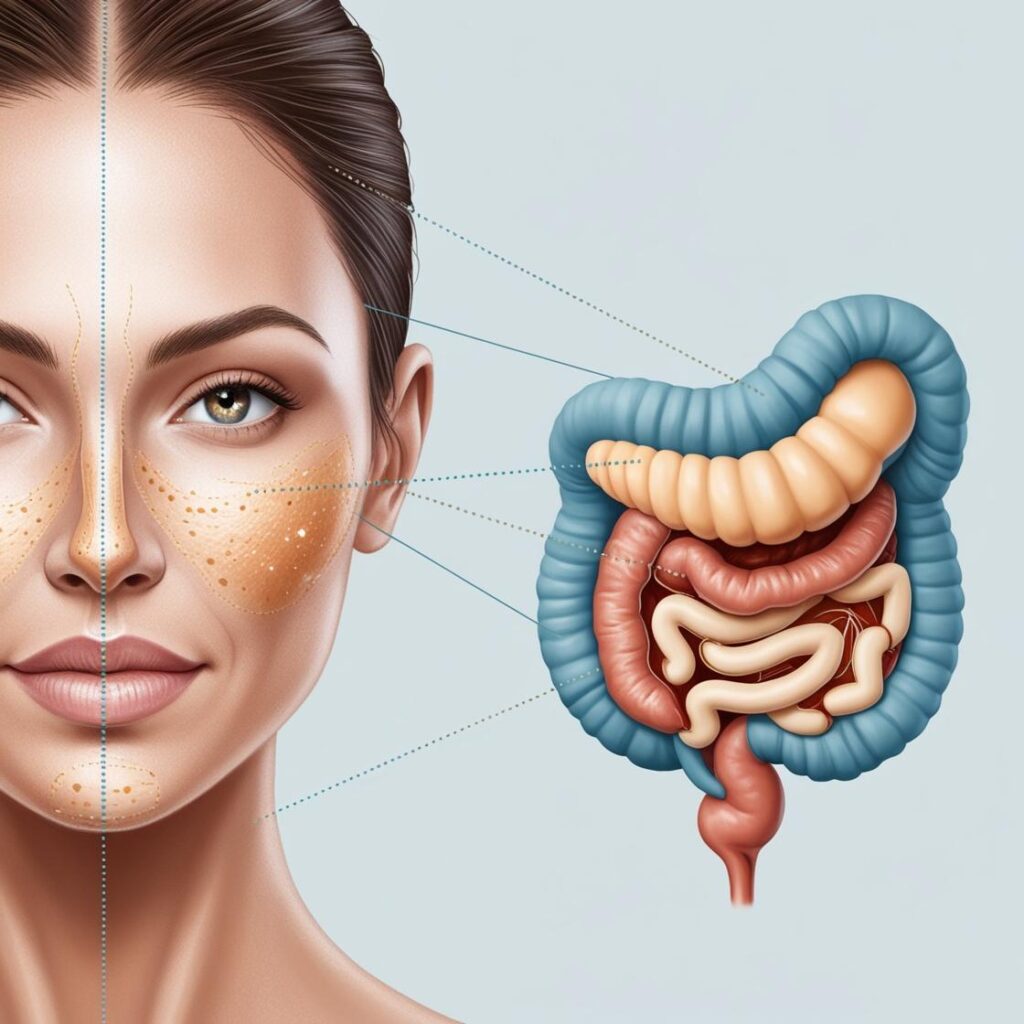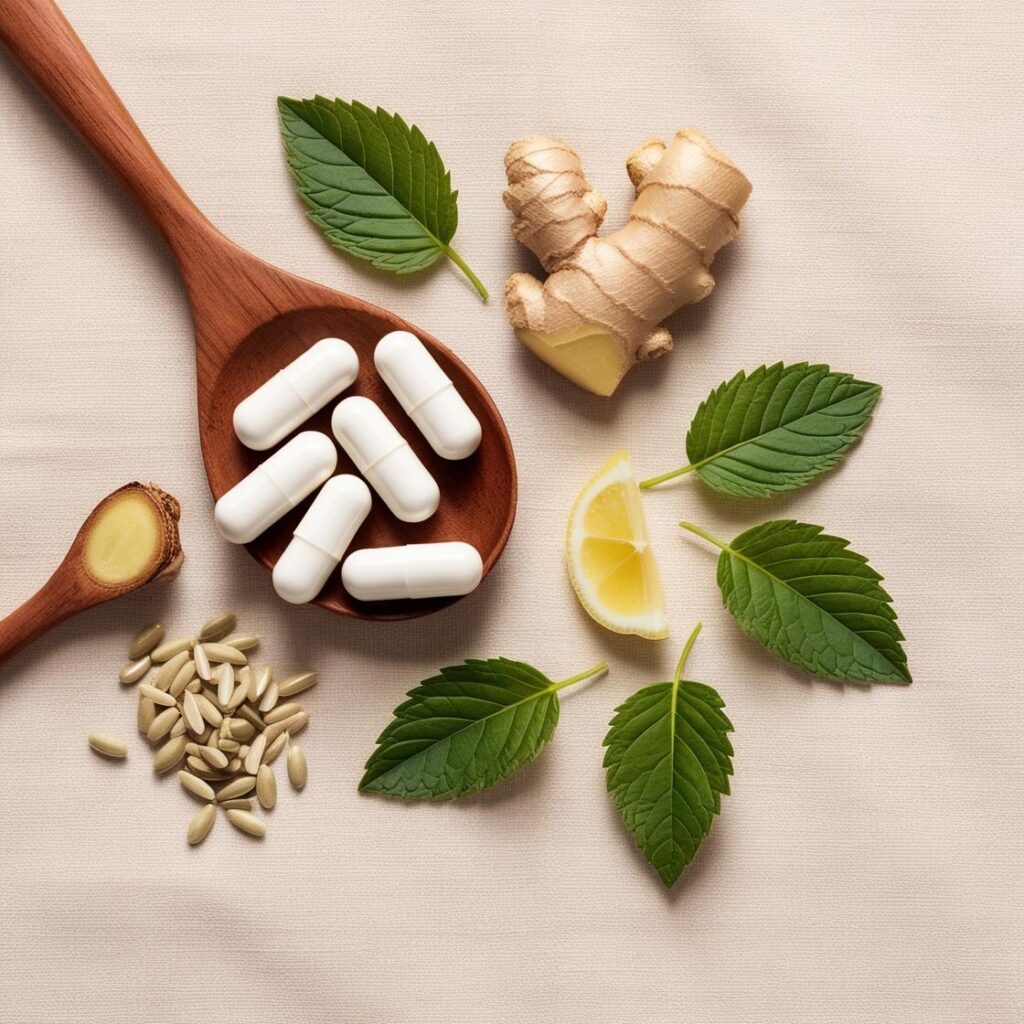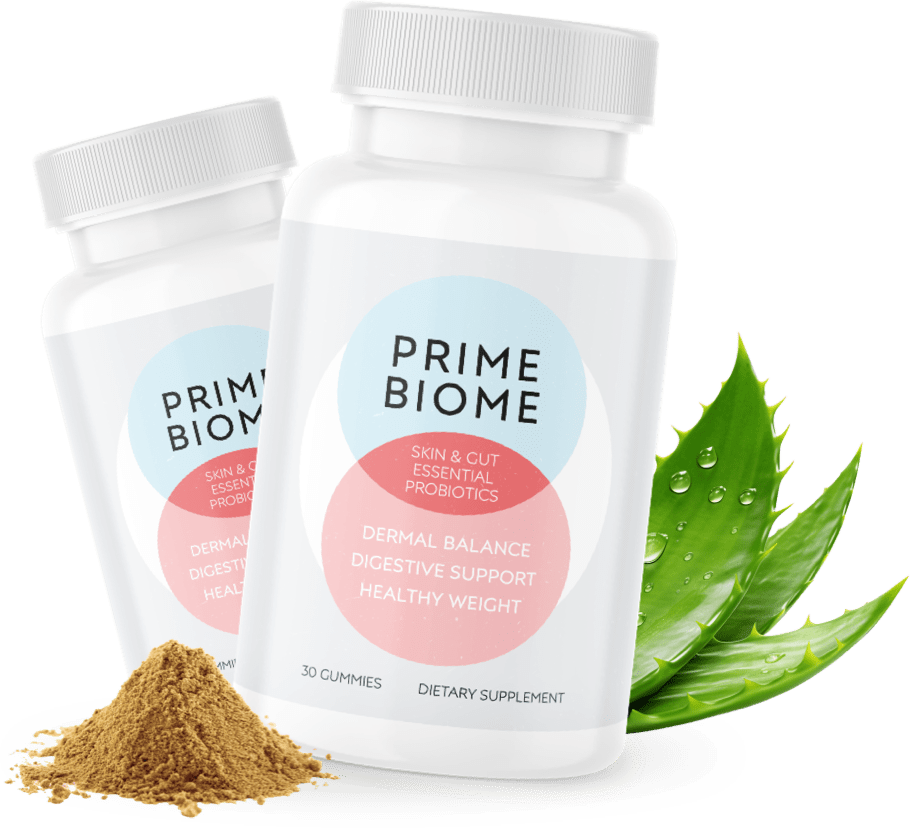What if your best skincare routine starts in your gut? Uncover the science inside!

Maintaining a balanced gut microbiome is crucial for overall health, influencing not only digestion but also skin vitality. Recent research has highlighted the gut-skin axis, the bidirectional link by which gut health can reflect in skin appearance and function12.
See how your internal balance shines on your skin.
This article explores how gut microbiome balance impacts skin health and introduces PrimeBiome, a supplement designed to support this essential relationship.
Disclosure: This post contains affiliate links. If you purchase through these links, I may earn a small commission at no extra cost to you. I only recommend products I believe in.
Related Articles: Your Coffee Can Help You Lose Weight
Understanding the Gut-Skin Axis
The invisible connection between gut microbes and glowing skin revealed!

Is your microbiome sabotaging your complexion? Here’s the missing link. The gut-skin axis describes how microbial balance in the digestive tract can shape skin conditions and inflammatory responses1. Dysbiosis, or an imbalance in gut microbiota, has been associated with acne, eczema, and even accelerated skin aging due to increased systemic inflammation3. Conversely, promoting gut microbial health can enhance skin clarity, texture, and elasticity.
Key Ingredients in PrimeBiome:
PrimeBiome is formulated to support both gut and skin health with evidence-based ingredients:
- Bacillus coagulans
- A resilient lactic-acid producing probiotic shown to modulate gut flora, reduce inflammatory markers, and potentially ease symptoms of some skin disorders4.
- Babchi (Psoralea corylifolia)
- Contains bakuchiol, a plant-derived compound that stimulates collagen production and improves photoaging, often used as a gentler alternative to retinol in dermatology5.
- Inulin
- A prebiotic fiber that promotes the growth of Bifidobacteria and Lactobacilli, indirectly improving skin barrier function and hydration7.
- Lemon Balm (Melissa officinalis)
- Recognized for its antioxidant and anti-inflammatory effects, potentially helping soothe the gut lining and skin9.
- Organic Ceylon Ginger
- Contains bioactive compounds that protect against oxidative stress and inflammation, both systemically and at the skin level6.
Benefits of PrimeBiome for Gut and Skin Health
By supporting gut homeostasis, PrimeBiome may offer these benefits31:
- Enhanced Digestion: Probiotics and prebiotics work synergistically to improve digestive function and nutrient absorption.
- Reduced Inflammation: Lemon balm and ginger may help reduce total-body inflammation, which often presents as skin irritation or redness.
- Improved Skin Appearance: Modulating the gut microbiome is linked to clearer, more radiant skin and slower visible aging.

PrimeBiome combines scientifically-backed probiotics and botanicals to support gut and skin health from within.
Scientific Backing and Dermatological Insights
Not your average supplement: See what gives PrimeBiome its gut-skin health edge.
Dermatology experts increasingly recognize the effects of gut health on skin resilience. Probiotics such as Bacillus coagulans may improve the skin barrier, reduce the incidence of acne and eczema, and decrease systemic inflammation41. Botanical ingredients like bakuchiol and ginger provide further support by combating oxidative stress and stimulating skin repair56.
Ready to Support Your Gut-Skin Axis?

Target the gut-skin axis—PrimeBiome delivers researched strains and botanicals for visible, whole-body benefits.
If you’re ready to take charge of your skin’s health by nourishing your gut from within, PrimeBiome offers a research-backed, comprehensive approach. Its synergistic blend of probiotics, prebiotics, and botanicals is specifically designed to support the gut-skin axis and help you feel confident in your skin.
Experience natural beauty from within: PrimeBiome bridges gut health and clear, glowing skin.
👉 Try PrimeBiome Today and Experience the Gut-Skin Connection for Yourself!
As an affiliate, I may earn a commission if you purchase through my link—at no extra cost to you. I recommend only products grounded in scientific research and proven results.
Conclusion
The connection between the gut microbiome and skin health is supported by a growing body of evidence. Balanced gut microbiota can significantly improve both digestive well-being and skin appearance. Products like PrimeBiome, which are grounded in scientific research, offer a promising approach to supporting the gut-skin axis and achieving radiant skin from within.
References
- Salem, I., Ramser, A., Isham, N., & Ghannoum, M. A. (2018). The gut microbiome as a major regulator of the gut-skin axis. Frontiers in Microbiology, 9, 1459.
- Roudsari, L. C., Maktabi, P., & Vafa, M. (2022). The Effect of Prebiotics and Probiotics on Skin Health: A Review of Clinical Trials. Journal of Cosmetic Dermatology, 21(2), 675-682.
- Bowe, W. P., & Logan, A. C. (2011). Acne vulgaris, probiotics and the gut-brain-skin axis. Gut Pathogens, 3, 1.
- Gupta, V., & Garg, R. (2009). Probiotics. Indian Journal of Medical Microbiology, 27(3), 202-209.
- Dhaliwal, S., et al. (2019). Bakuchiol and retinol for facial photoageing. British Journal of Dermatology, 180(2), 289-296.
- Mashhadi, N. S., et al. (2013). Anti-oxidative and anti-inflammatory effects of ginger. International Journal of Preventive Medicine, 4(Suppl 1), S36–S42.
- The Human Microbiome Project Consortium. (2012). Structure, function and diversity of the healthy human microbiome. Nature, 486(7402), 207–214.
- Ulbricht, C., et al. (2005). Lemon balm (Melissa officinalis): Systematic review. Journal of Herbal Pharmacotherapy, 5(4), 71-114.
